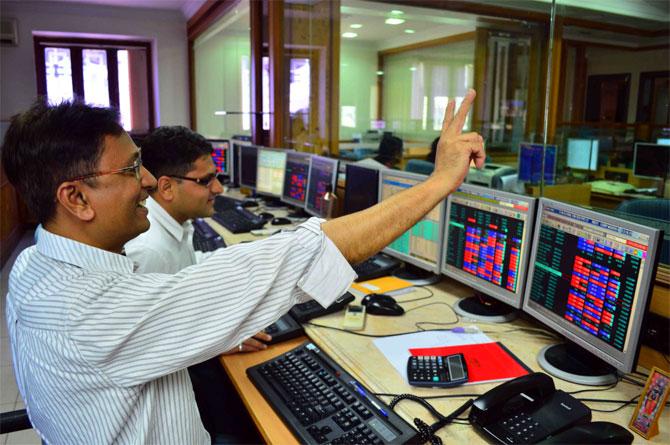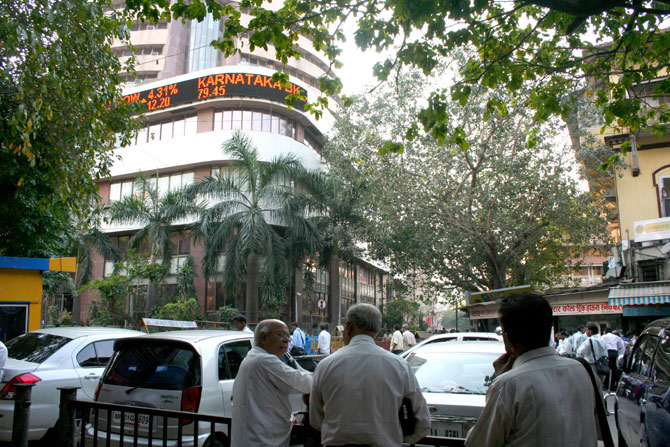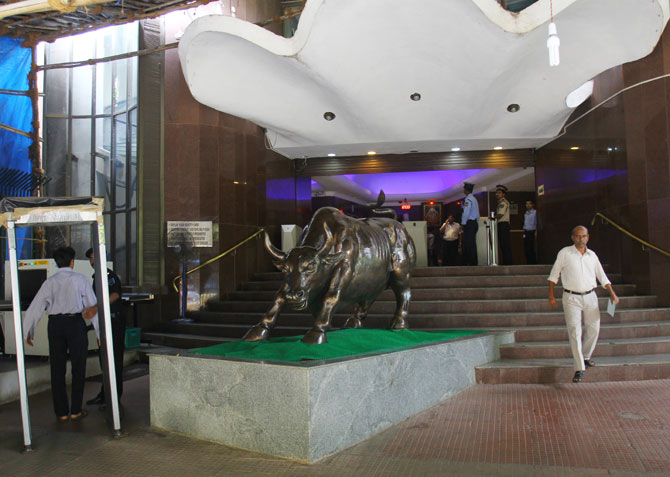 | « Back to article | Print this article |
It's time to invest not to withdraw
High-frequency macroeconomic data suggests that worst is behind us and the economic cycle is turning.
Nifty is at an all-time high, with a 25 per cent rally from its 2014 lows in February. Such a sharp rally is definitely tempting for investors to take some money off the table. However, before taking any investment decision, we need to understand that we are entering into a much more favourable macroeconomic, business and investment environment compared to what we have seen in the last 3-4 years.
After all, since 2010, the Nifty has delivered just five per cent compound annual growth rate (CAGR) return.
First of all, India is out of macroeconomic vulnerability.
Balance of payments has improved considerably, the rupee has stabilised and forex reserves are getting replenished.
Also, the government remains committed to fiscal prudence.
Further, high-frequency macroeconomic data suggests that worst is behind us and the economic cycle is turning.
In recent months, significant improvement has been observed in purchasing managers’ index surveys, exports and railway freight traffic, among others.
Equally importantly, inflation trend has begun to turn favourable, especially with core retail inflation declining over the past two months.
Prudent government food policy, stable exchange rate and benign global food prices offer a backdrop which is conducive to declining inflation trajectory over the course of next several quarters.
As this happens, it will set the stage of monetary cycle reversal, which will be a big tailwind for growth as well as markets.
Please click NEXT for more...
It's time to invest not to withdraw
Secondly, the new government has hit the ground running in terms of fixing the supply side of the economy.
The government has made tackling inflation its priority and it has taken several measures over the last month in this regard.
The Budget has brought growth back in focus with meaningful push given to infrastructure, manufacturing and real estate.
Liberalising foreign direct investment in insurance and defence and, of late, moving towards reforming the labour laws (a long pending supply side reform) shows the government’s commitment to enhancing India’s capacity to sustain the next phase of economic growth.
The benefits of post-1991 trade and industrial liberalisation are fading and India needs the next generation of reforms. We have the best chance in next five years.
Thirdly, it is also important to recognise that emerging markets as an asset class is coming back in favour.
Growth momentum is recovering in the western economies while inflation pressures are benign, thereby offering Goldilocks type of investment environment, which is very conducive to the EMs as an asset class.
Within EMs, India is poised favourably given the very strong and pro-reform central government.
Please click NEXT to read more...
It's time to invest not to withdraw
All these factors suggest that India is about to embark on its next growth cycle, which is going to be well-founded on supply-side reforms, stable and contained inflation and favourable global macroeconomic environment.
Thus, economy will be well supported by both the engines of demand -- domestic and exports. Such an environment augurs well for earnings and valuations.
One should not be surprised if the earnings trajectory moves to 20-25 per cent range from nearly 10 per cent seen in the past two-three years.
In the near-term, the markets might be a bit volatile and range-bound, given the absence of immediate triggers and development of some uncertainties on the international front. However, there is little doubt in my mind that the next five years belong to equities.
Hence, use every opportunity to buy into equities.
Vikas Khemani is president & CEO, Edelweiss Securities Ltd



